In today's fast-paced world, effective crisis communication is more important than ever. Organizations must be prepared to respond swiftly and transparently to unexpected challenges, ensuring that all stakeholders receive accurate and timely information. With our comprehensive crisis communication guidelines, you'll discover strategies to navigate tough situations while maintaining trust and clarity. Ready to enhance your communication skills? Dive into our article to learn more!
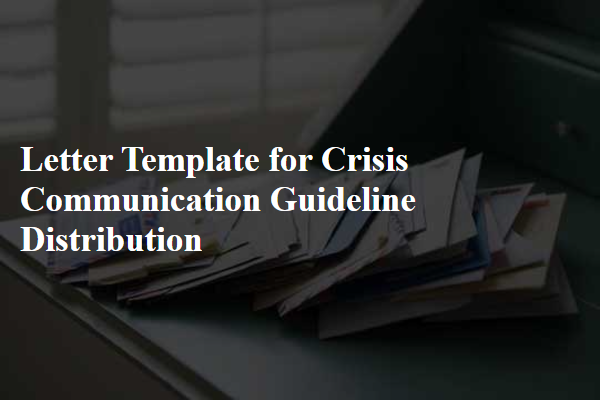
Clear communication objectives
Effective crisis communication requires clear communication objectives to ensure accurate information dissemination and stakeholder reassurance. Establish key objectives such as maintaining transparency about the situation, delivering timely updates, and addressing stakeholder concerns. Define target audiences, including employees, customers, and media outlets, to tailor messages appropriately. Utilize various communication channels, such as social media platforms, email newsletters, and press releases, to reach diverse audiences. Establish a consistent messaging framework to avoid misinformation and confusion during the crisis. Monitor feedback and adjust communication strategies based on audience responses to maintain trust and credibility. Additionally, emphasize the importance of empathy and support to foster a positive organizational image amid challenging circumstances.
Target audience identification
Target audience identification is crucial during crisis communication processes. Stakeholders, such as employees, customers, media, and regulatory bodies, require tailored messaging for effective information dissemination. Employees, numbering in the thousands at large corporations, need clear directives to maintain morale and productivity. Customers, potentially in the millions, seek reassurance and updates to foster trust in the brand. Media, including local and national news outlets, require concise and factual information for accurate reporting. Regulatory bodies, such as the Environmental Protection Agency (EPA), demand compliance details during crises involving environmental impact. Engaging these varied groups with specific, relevant information ensures effective communication and strengthens public relations.
Consistent messaging framework
Crisis communication guidelines are essential for maintaining a cohesive and effective response during emergencies. A consistent messaging framework aids in delivering clear information to stakeholders, ensuring alignment across various communication channels. Key components of this framework include predefined roles for spokespersons, tailored messaging for different audiences, and protocols for timely updates. Incorporating data from past crises, such as the 2020 pandemic or natural disasters, can provide valuable insights into effective communication strategies. Establishing a central communication hub, like an internal website or platform, allows for realtime updates and access to resources. Employing this structured approach enhances organizational credibility and fosters trust among stakeholders.
Designated spokespersons
Designated spokespersons play a crucial role in crisis communication, often serving as the main point of contact between the organization and the public. These individuals, typically trained professionals such as public relations specialists or senior executives, are tasked with conveying accurate and timely information during emergencies. The need for clear messaging is paramount, as misinformation can spread rapidly, particularly on social media platforms like Twitter and Facebook. Training sessions, including mock scenarios, can prepare spokespersons for various crisis situations, such as natural disasters, data breaches, or product recalls. Clear protocols ensure that all communications are consistent, reducing confusion and reinforcing trust with stakeholders. It is essential to periodically review and update communication strategies to adapt to evolving situations and maintain organizational transparency.
Feedback and evaluation mechanisms
Crisis communication guidelines are vital for organizations, especially during emergencies or unexpected events, ensuring clear and effective messaging. Feedback mechanisms can include surveys, focus groups, or dedicated communication channels to gather employee insights regarding the crisis response. Evaluation mechanisms may involve reviewing incident response outcomes or analyzing communication effectiveness through metrics like engagement levels. Timely assessment of the communication strategy allows organizations, such as non-profits or businesses, to adapt and improve responses based on real-time data. Providing continuous training and resources can further enhance preparedness for future crises, aligning with best practices in organizational resilience.
Letter Template For Crisis Communication Guideline Distribution Samples
Letter template of organizational crisis management directives distribution
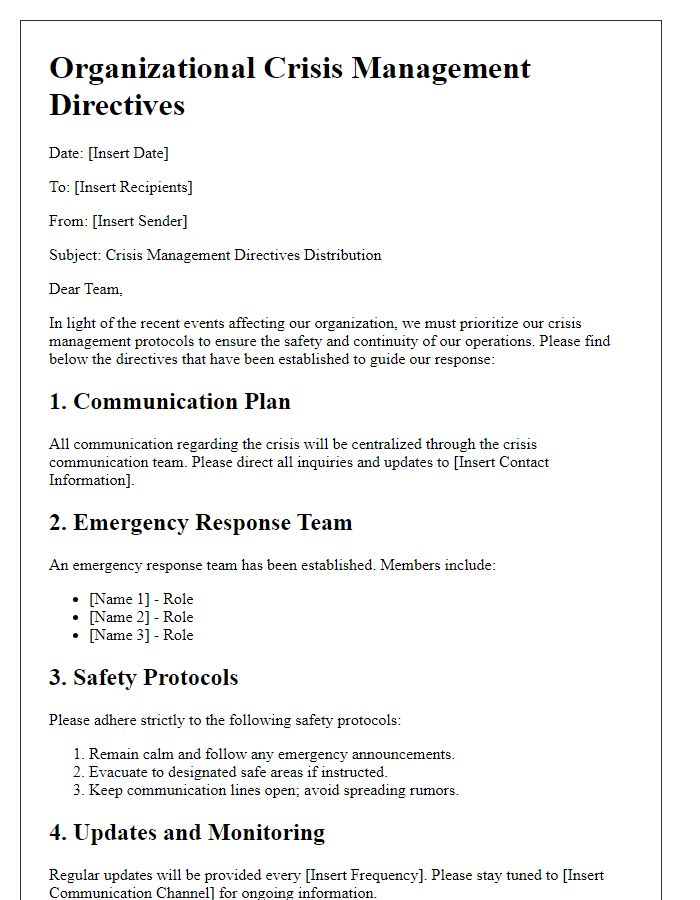

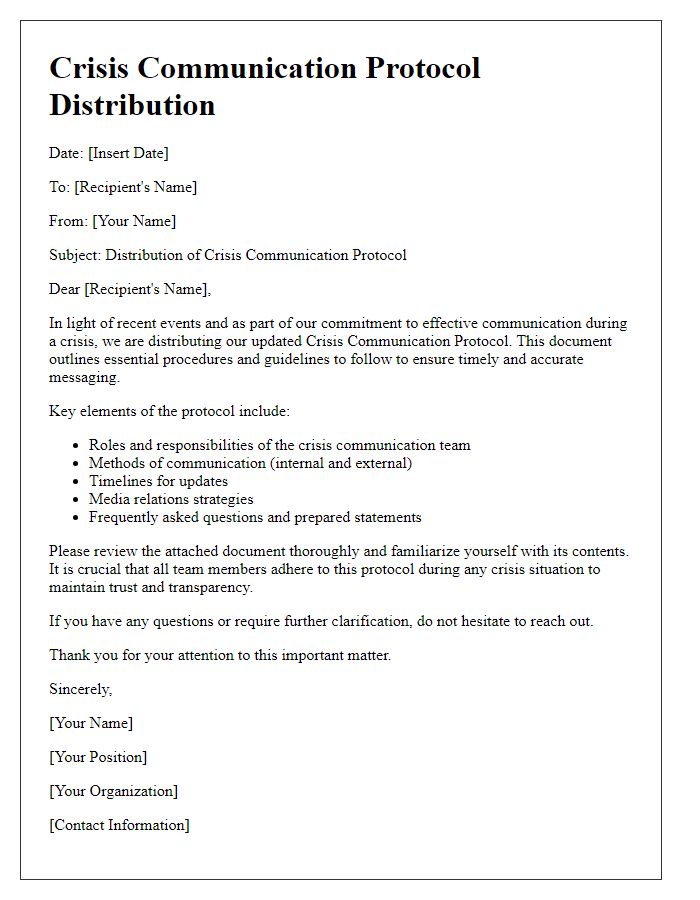
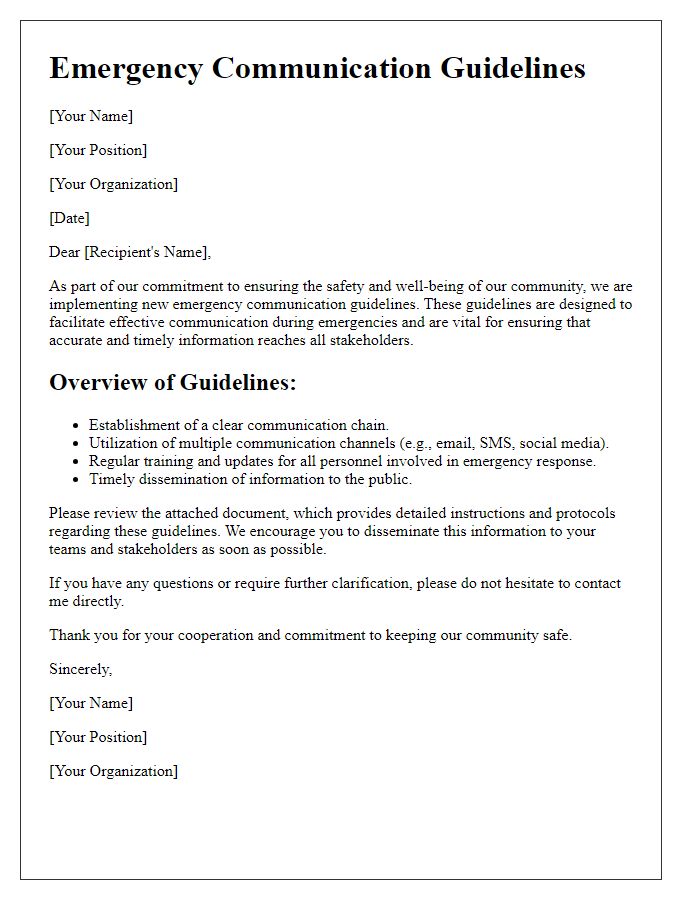
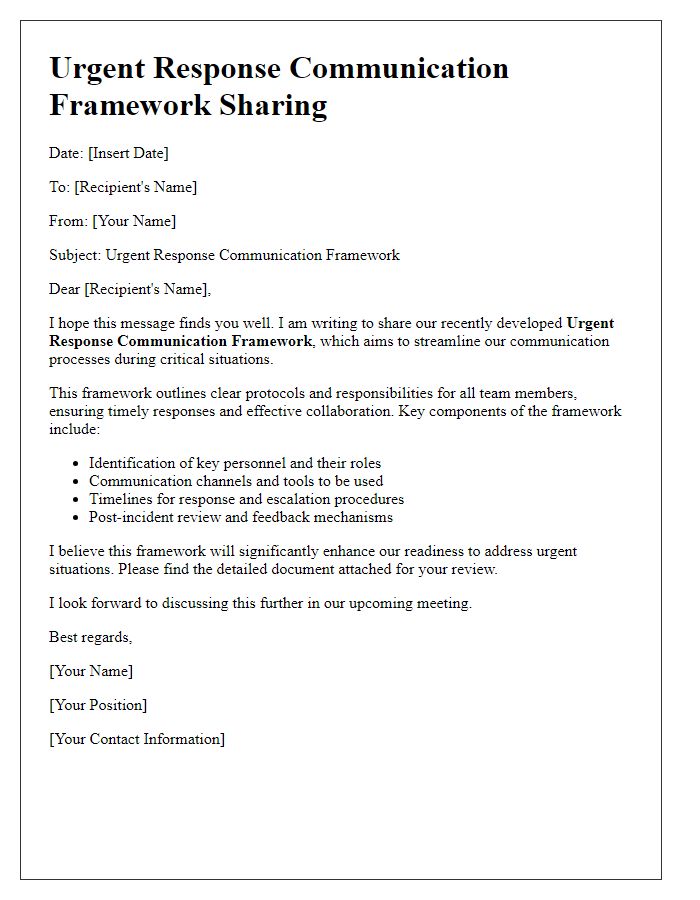
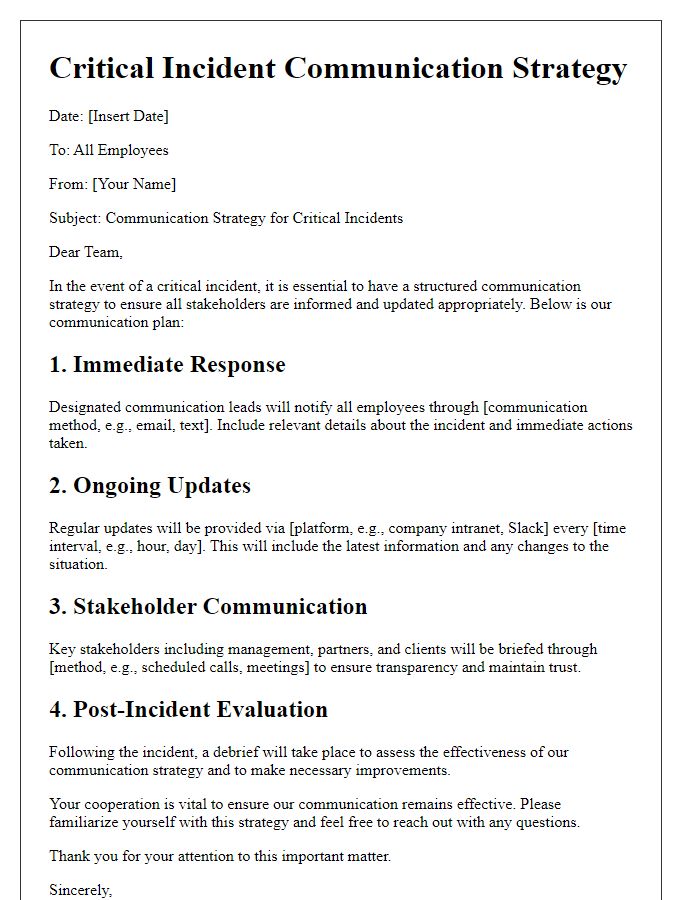
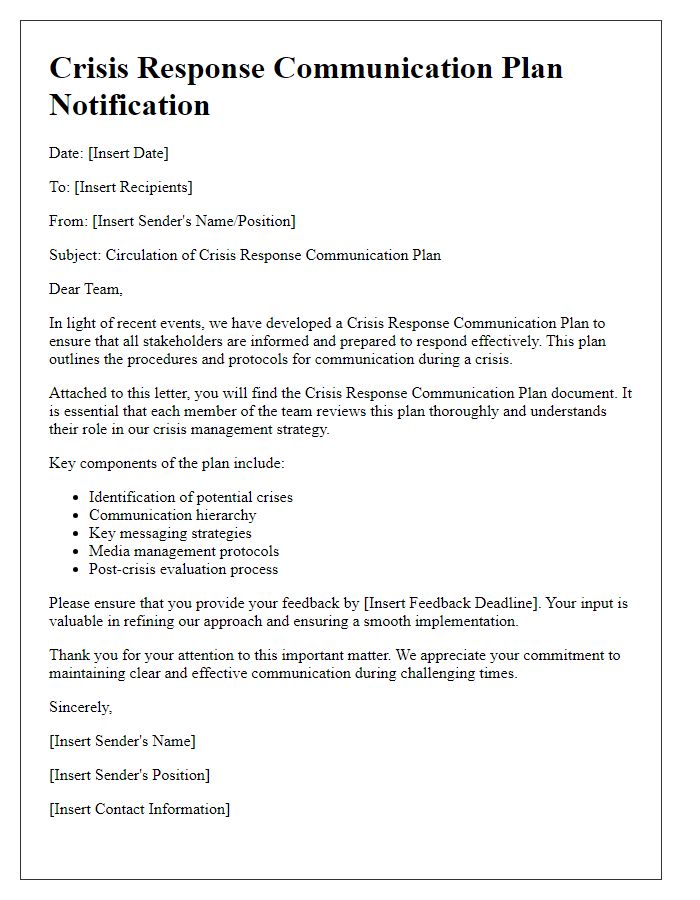
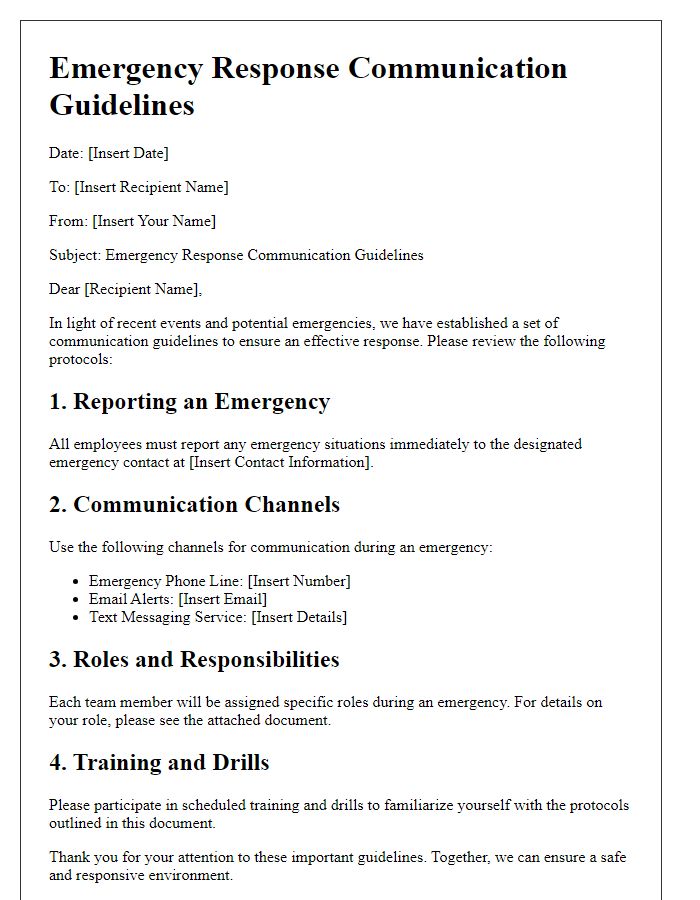
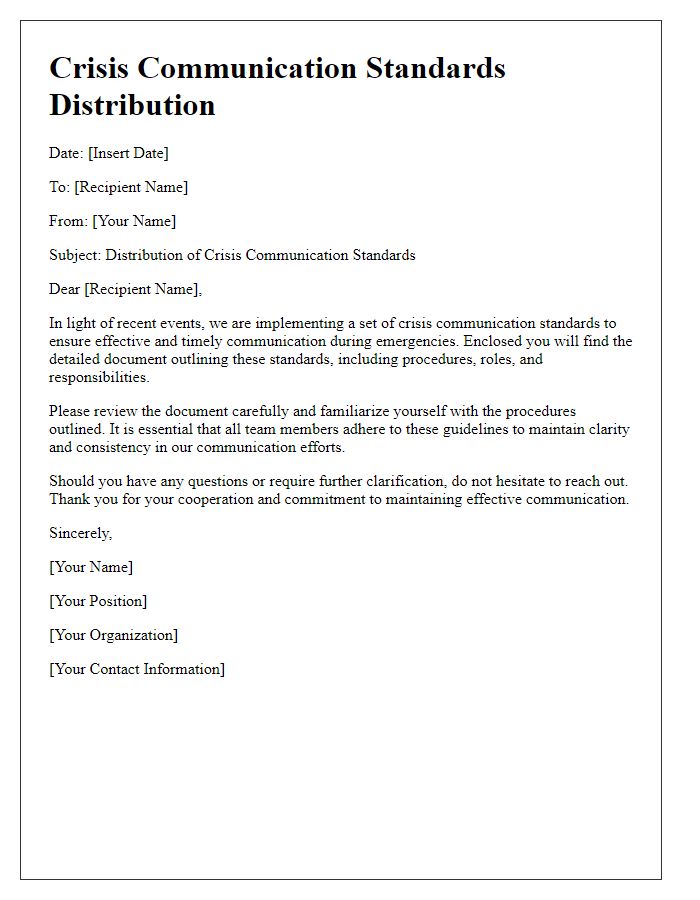
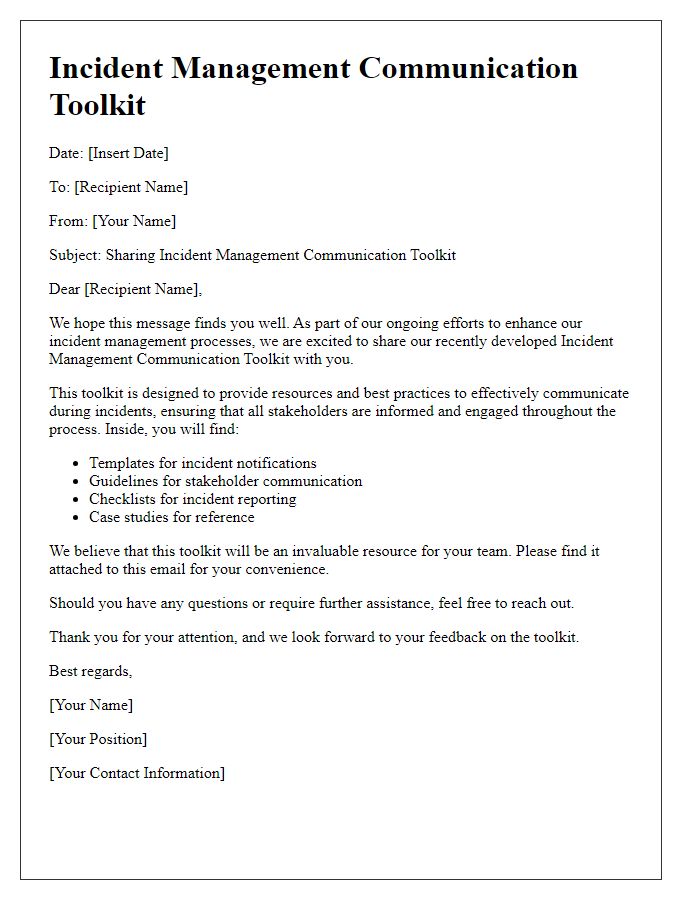
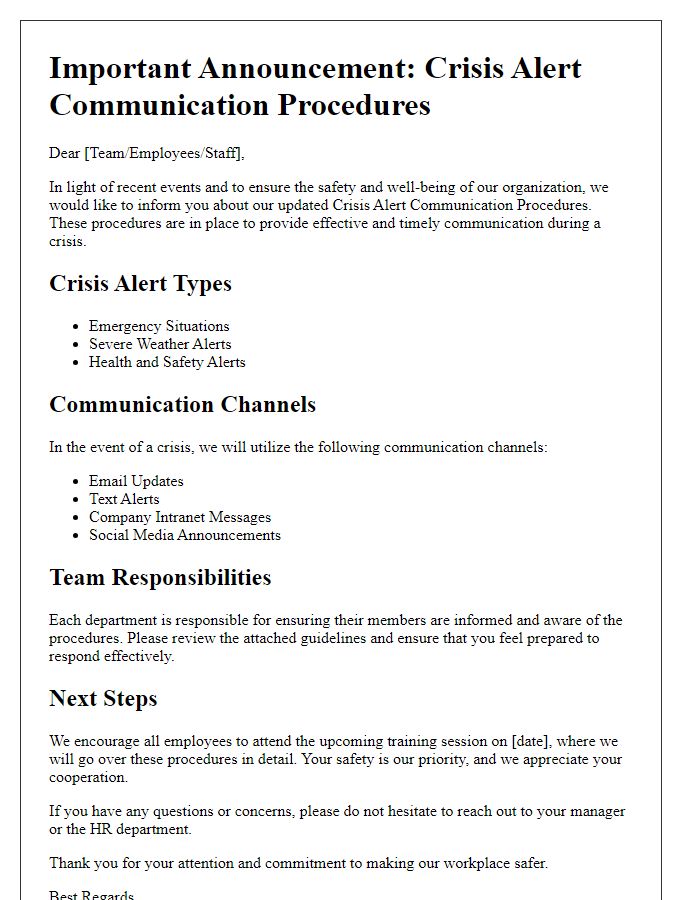


Comments